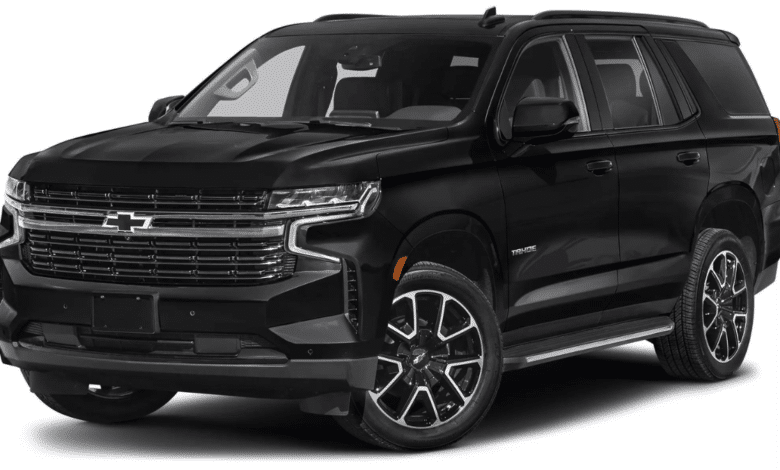
The Chevrolet Tahoe and its very long Suburban brother have ruled the full-size SUV market since the mid-1990s. The 1994 replacement of Chevrolet’s outdated two-door K5 Blazer (which had the same underpinnings as the Suburban) with a more family-friendly four-door resulted in the birth of the Tahoe, which is renowned for its truck-based chassis, tried-and-true mechanicals, and unmatched utilitarianism. Since then, it has repeatedly held the distinction of being the most popular full-size SUV in America. With the current fifth-generation model, a flexible and competent package that’s simple to live with daily, GM seems to have perfected the vast SUV.
Although the Tahoe is a daring SUV that deserves accolades, those may be some big statements. With the new model due out in 2021, engineers abandoned the solid rear axle in favour of a completely independent rear suspension, which has two advantages. First, it significantly expanded third-row room and legroom while increasing the maximum cargo volume from 94.7 to 122.9 cubic feet. Second, the ride and handling were much enhanced. A 3.0-liter inline six-cylinder turbodiesel joined the tried-and-true gasoline V8 options in the engine department, providing customers with more opportunities than before.
Little has changed for 2023, except for some new exterior colours (Silver Sage Metallic, Sterling Gray Metallic, and Radiant Red Tintcoat) and interior features. Most importantly, the Premiere and High Country now come standard with GM’s famed SuperCruise semi-autonomous assisted cruise control. A performance package is also provided for the RST model. Yes, plenty of smaller, far more reasonably priced car-based SUVs have three rows of seats, a ton of capacity, and even the ability to tow. However, only a few can compare to the Tahoe’s outstanding usefulness and spaciousness.
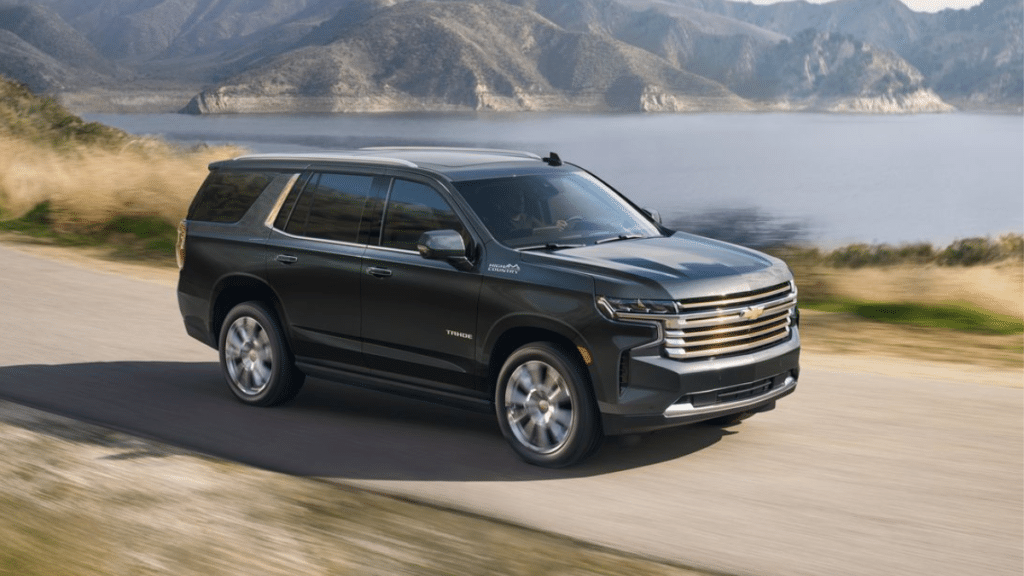
So it is no surprise that a basic, two-wheel-drive V8 Tahoe LS now costs a hefty $56,095 (including the $1,895 destination charge), which is $2,400 more than last year. The price swiftly increases when upgrades like the optional turbo diesel engine ($995) and four-wheel drive ($3,000) are selected. If you choose one of the other five grades (LT $61,595, RST $68,015, Z71 $66,195, Premier $72,495, and High Country $77,495), you’ll be competing with the GMC Yukon and Cadillac Escalade, the upmarket versions of GM’s trio of large SUVs.
Even though adjectives like “agile” and “light on its feet” aren’t often used to describe a nearly three-ton, 17.5-foot-long, and over six-foot-tall SUV. However, GM engineers persisted in taming the Tahoe’s ladder frame, which was based on a truck, for a smoother ride more in line with the competition. The completely independent rear suspension is crucial once again. The Tahoe’s manners are significantly enhanced with the optional adaptive suspension; the more responsive handling substantially reduces the Tahoe’s footprint and restores luxury car-like damping and body movements. Even while it’s still a massive vehicle, it doesn’t constantly remind you of that fact when you crank the steering wheel.
The 2023 Tahoe combines features and hardware meticulously chosen to provide a well-balanced SUV. While the Ford Expedition delivers comparable performance but less interior space, the relatively new Jeep Wagoneer has a little more modern elegance inside and out and a rich history. The outdated Nissan Armada and the brand-new Toyota Sequoia are smaller truck rivals. Although other regions of the globe are renowned for their superb sports and economy vehicles, America is notably recognized for full-size SUVs, a style that the Tahoe typifies. Nevertheless, the Tahoe remains the standard full-size SUV.
Performance: Chevrolet Tahoe
The Tahoe’s standard engine is a 5.3-litre gasoline V8 from General Motors. It’s a tried-and-true engine that propelled the previous two Tahoe models and is rated at 355 horsepower and 383 pound-feet of torque in this application. A 3.0-liter inline six-cylinder turbodiesel with 277 horsepower and a sizable 460 lb-ft of torque is available ($995, standard on the High Country). There is also the “big” 6.2-litre gas V8 engine, which has 420 horsepower and 460 lb-ft of torque. A smooth 10-speed automatic gearbox is connected to all of them.
The 5.3-litre V8 will be more than enough for the everyday demands of most consumers. The 6.2-litre, though, provides a far more exciting experience. When you press the accelerator in the 6.2-equipped Tahoe, as we learned during our week-long study, you are thrown back into the seat as the 5,900-pound monster accelerates to 60 mph in approximately six seconds instead of roughly 7.5 seconds for the 5.3 litres. With more power provided by the RST Performance Edition, the time is decreased to under six seconds.
The inline six-cylinder diesel seems most at home in the Tahoe, fuel costs aside. All 460 lb-ft of the diesel’s grunt is accessible at an astonishingly low 1,500 RPM, unlike both V8 engines, which achieve their maximum torque at 4,100 rpm. It also translates to fluid towing response and uncomplicated low-speed handling.
Strangely, the variant with the lowest horsepower has the maximum towing rating. When outfitted with the $565 Max Trailering kit, the 5.3-litre with 2WD can tow up to 8,400 pounds, the 6.2 with 8300, and the diesel with 8200. (For four-wheel drive, deduct 200 pounds per axle.) Meanwhile, the differences are primarily theoretical and have more to do with the weight and cooling capacity of the vehicles than actual strength. Its longstanding competitor, the Ford Expedition, can tow a maximum of 9,300 pounds while, in theory, getting greater fuel efficiency from its twin-turbo V6.
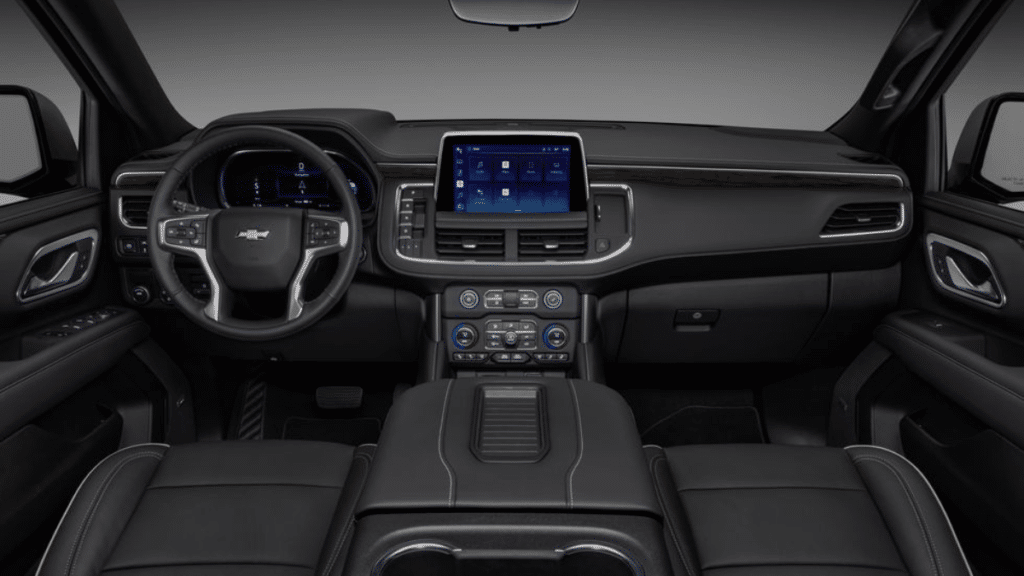
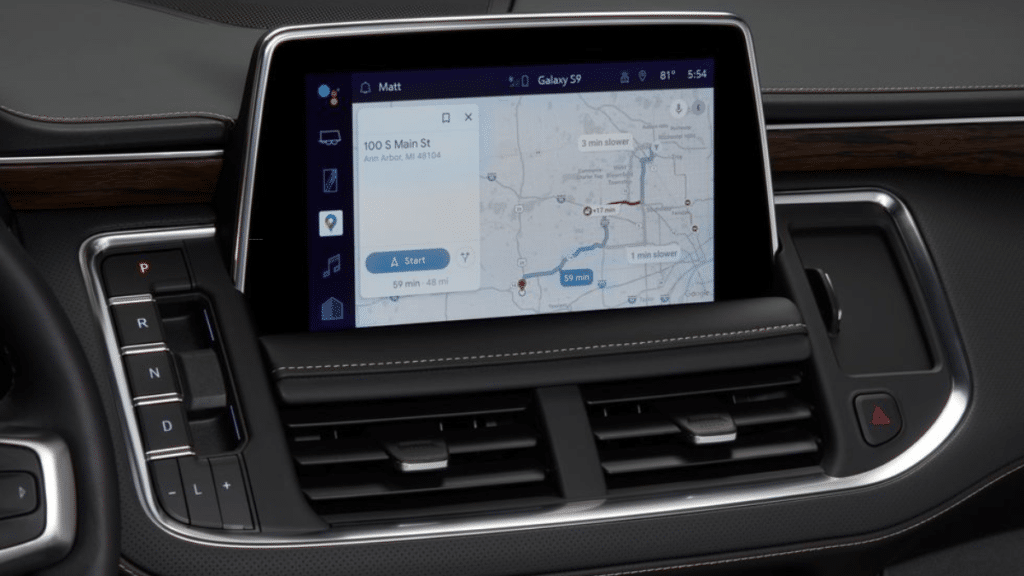
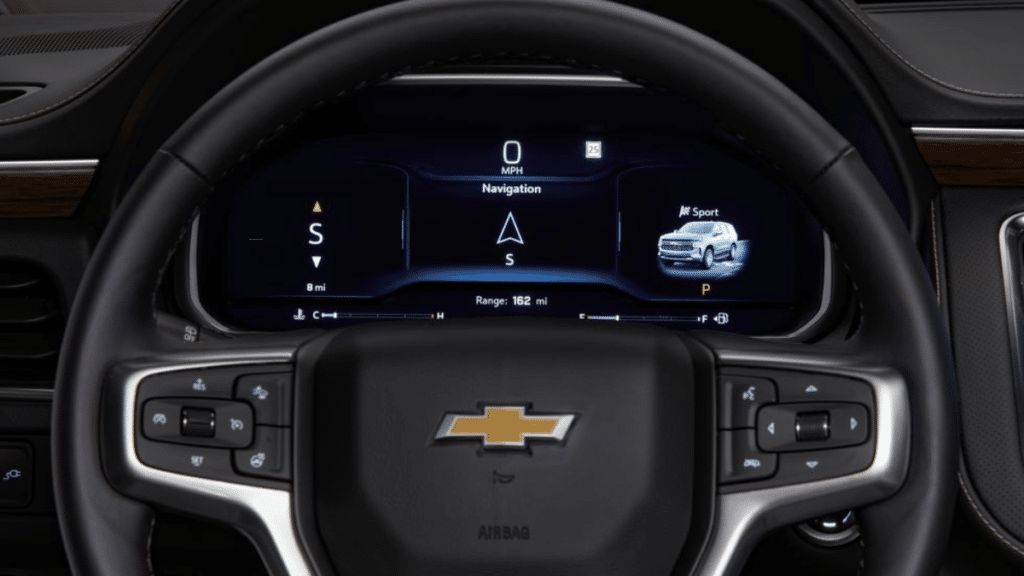
Fuel efficiency: Chevrolet Tahoe
Fuel economy is probably not something you’ll be thinking about much if you’re shopping for an SUV like the Tahoe or one of its rivals. Chevrolet and the EPA have not formally agreed upon the 2023 statistics. However, given that the rear-wheel-drive 5.3 is rated at 17 combined, 15 mpg in the city, and 20 mpg on the highway in both the rear and four-wheel drive (4WD), we assume they aren’t much different from last year. Surprisingly, the 6.2 doesn’t have a heavy price; it drops to 16 combined, 14 cities, and 20 highways. However, it does lose one mpg on the highway when equipped with 4WD. In our testing, the 6.2-liter V8-powered Tahoe High Country achieved 14–19 mpg in mixed traffic.
The Ford Expedition with the best fuel economy is rated at 19 mpg combined, 17 cities and 23 highways. and the 2023 Wagoneer achieves 20, 14, and 24 mpg with its new inline turbocharged six-cylinder. Every mpg in the class of body-on-frame SUVs weighing more than 5,000 pounds must be won; Toyota’s new Sequoia with the V6 is only rated at 22 combined, 21 city, and 24 highway.
The 3.0-litre turbodiesel engine is an option and is rated to get 24 combined mpg, 21 city mpg, 28 highway mpg, and 22, 20, and 26 mpg with four-wheel drive in 2022. We recorded 23.5 mpg in our test of a diesel Tahoe in 2021, and we’ve seen this engine provide higher fuel economy than claimed in other GM cars. The higher cost of diesel fuel, commonly available for a 10–20% premium over gasoline when the turbodiesel first became commercially accessible three years ago, naturally tempers those estimates.
Safety & Driver Support
The Insurance Institute for Highway Safety (IIHS) has not yet assessed the 2023 Tahoe. However, the National Highway Traffic Safety Administration (NHTSA) has given it a four-star overall rating. In 2022, Chevrolet will combine all its necessary driver assistance safety technology into the “Chevy Safety Assist” package. It has automatic high beams, lane-keeping assistance, a forward following distance indicator, forward collision warning with pedestrian recognition, and automated emergency braking.
The optional additions include radar-guided cruise control, a rear camera washer, 360-degree surround reverse and parking cameras, and a heads-up display. Suppose you’re interested in GM’s most recent Super Cruise semi-autonomous driving technology. In that case, Chevy has said that the Premiere and High Country trims will get it later in the 2023 model year. Unfortunately, the official price hasn’t been released yet, but we anticipate it will be more expensive than the GMC Yukon and Chevrolet Silverado.
We spent a week evaluating the High Country and discovered that every system ran well. The optional 360-degree parking cameras were beneficial, in our opinion. However, it was puzzling that our $83,000 tester lacked adaptive cruise control. It looked outrageous initially, but Chevrolet openly admitted on its website that availability starts later in the year. Production continues to be plagued by chip shortages.
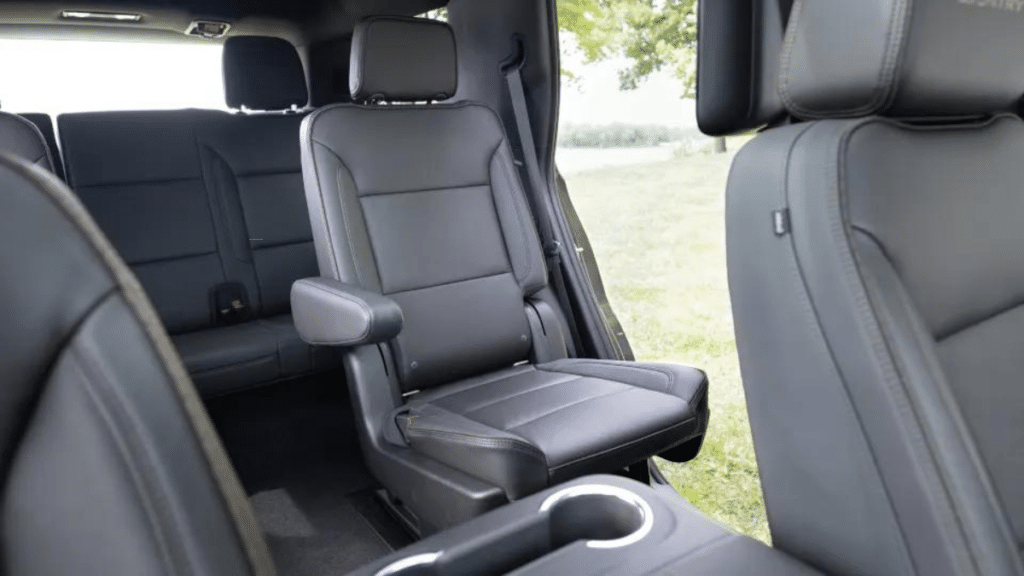
Comfort and Space
The Tahoe’s spacious cabin, enhanced with comfy seats and a soft ride, provides plenty of room for all its passengers to spread out. Therefore, when fitted with the adaptive suspension, it is a tranquil, peaceful, and pleasant place regardless of road conditions and speed.
The base versions for the first eight passengers come with two front bucket seats and two benches for the second and third rows. The number of passengers is reduced to seven in higher trims thanks to the addition of two captain’s seats in the second row.
Rear seat legroom is 42 inches, 42 inches less than the Expedition, 41.2 inches less than the Sequoia, and 42.6 inches less than the Wagoneer. Legroom in the third row of the Tahoe is 34.9 inches. Once again, the Expedition beats the Sequoia and Jeep Wagoneer with a maximum of 36.1, 33.7 (the seat moves forward and back), and 36.6, respectively. Of course, if the Tahoe seems dimensionally inadequate, the Suburban, the Tahoe’s almost identical big brother, is available.
Infotainment: Chevrolet Tahoe
The most recent Tahoe got an infotainment system upgrade that was long needed. All other models get the improved high-definition 10.2-inch infotainment screen and 12.3-inch digital instrument cluster, a combination that was previously only available on higher-end trims. Base LS cars are equipped with an 8.0-inch screen and analogue driver gauges. Integrating Google-specific applications like Maps, Assistant, and Play into the new UI, which is rather slick, is appreciated.
The first three months of SiriusXM are free, and a Wi-Fi hotspot comes with a one-month trial. Google’s Built-In connection, which costs a subscription and is unavailable on base LS vehicles, was extended to all other trims last year.
The new design is appreciated since the previous one seemed dated. Despite all the upgrades, GM’s infotainment systems are simple to operate, and returning owners will still recognize the layout of the primary menus for navigation, radio, and other essential infotainment elements. The premium 10-speaker Bose CenterPoint system also performs well, although its speed-sensitive volume appeared to mute things with no way to modify its sensitivity aggressively. Even at default settings, the bass seemed very prominent.
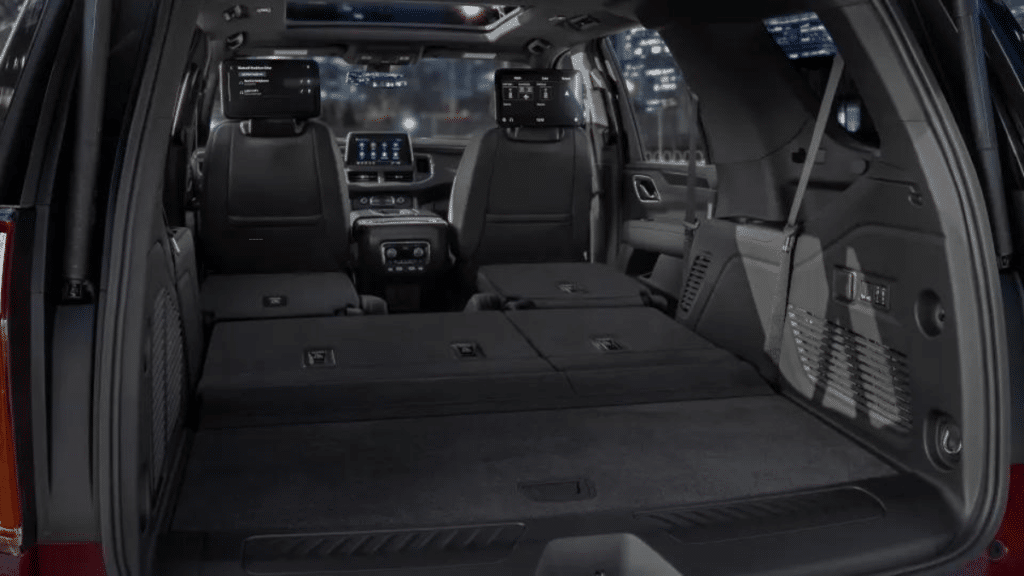
Storage & Cargo Space:
The ability to transport people and their belongings in a considerably more durable package than a minivan or crossover SUV-based vehicle is one of the attractions of SUVs like the Tahoe. The new design extended the rear quarters in 2021, allowing for much more aft internal room for passengers and cargo than the previous version, increasing capacity.
With 25.5 cubic feet behind the third row, only the Tahoe’s GM siblings can equal its internal volume. When the third row is folded flat, the volume increases to a vast 72.6 cubic feet, and when all the seats are folded down, it rises to a huge, class-leading 122.9 cubic feet.
The Jeep Wagoneer, with its 27.4 cu ft behind the third row, 70.8 cu ft with the third row down, and 116.7 cu ft with all rear seats down, is the only SUV that comes close. The Nissan Armada’s dimensions of 16.5, 49.9, and 96.4 cu ft and the Ford Expedition’s of 19.3, 20.9, and 104.6 cu ft are incomparable. If you need as much cargo space as possible, the Tahoe is your best bet.
Design: Chevrolet Tahoe
Being a vast vehicle has advantages since it provides designers with much surface area for carving. As a result, the Tahoe never really had any cosmetic problems. However, controversy has long surrounded its corporate-themed and often large front-end designs. Despite this, the present invention blends in nicely and is quite understated compared to more expensive models.
The Tahoe is a gorgeous beast. Chevrolet engineers did a fantastic job of integrating creases and corners, but you can only soften brick edges so much before losing some of your boldness. The High Country, the highest model in our tester, has a more abundant appearance thanks to its enormous 22-inch wheels and tasteful chrome grille.
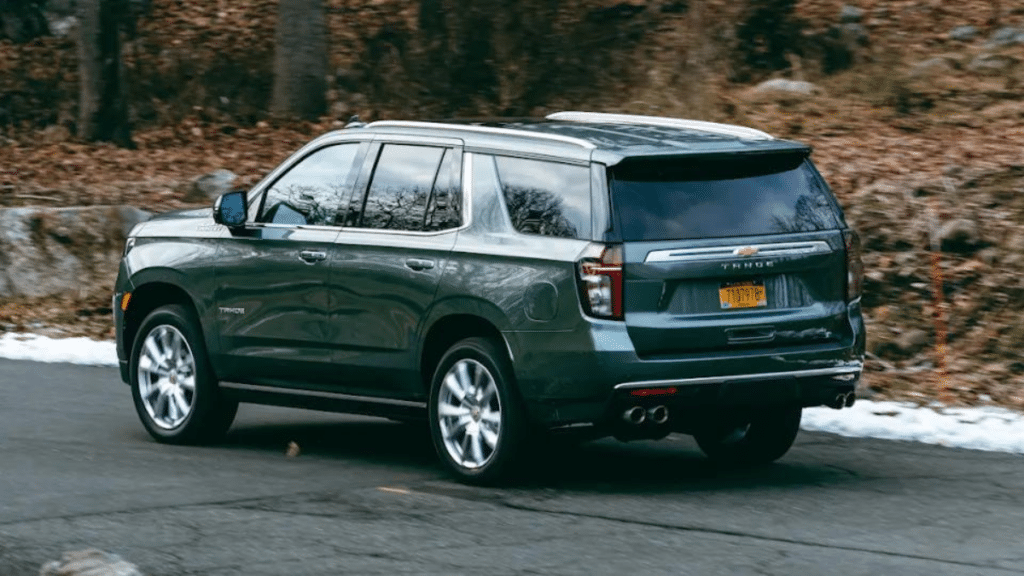
The Chevrolet Tahoe 2023: Is it worth it?
The Tahoe is probably a good choice if you’re looking for a full-size SUV since you know what you’re getting into. The primary $56,095 (with the $1,895 destination fee) LS offers the necessary workhorse Tahoe experience that does the task without compromising on vital standard amenities. Three rows, many safety features, and a nine-speaker Bose audio system are all still included. The additional $995 for the six-cylinder diesel engine and the $3,000 for 4WD bring the total to $60,090.
But at that point, we could choose between the Z71 ($66,195) or the RST ($67,195). The RST’s 6.2-litre V8 is enticing in addition to the updated infotainment system and other amenities since the fuel penalty isn’t as severe given the added performance, and diesel fuel is still subject to a premium due to inflation.
However, if off-roading were on the agenda, we’d choose the Z71 because of its additional off-road equipment and standard 4WD. Although this large SUV lacks Wagoneer’s hardware, it can handle a variety of terrain rather well. It is less manoeuvrable on the trail than smaller cars like the Jeep Grand Cherokee. The Z71’s unique bumpers increase approach and departure angles, and its trail-friendly wheels outperform the giant rims on the top grades.
We enjoy the Premier and High Country trims with their comfortable adaptive dampers with standard and optional air springs. Still, at that point, you’re approaching the crowded luxury SUV market. Those automobiles elevate luxury to heights the Tahoe can only aspire to, even within the GM family.
How Much Does the Chevrolet Tahoe Cost to Insure?
Insurance rates for the Tahoe are similar to those for other big SUVs. For the standard LT, a typical 30-year-old female driver with a clean record should anticipate an annual premium of roughly $2,100. Tahoe High Country, the most expensive model, costs $2,220; however, this averages for all 50 states. Comparatively, a Ford Expedition Limited costs $2,369, a Nissan Armada SL costs $2,365, and a Jeep Wagoneer costs $2,399.
Verdict
The 2023 Chevrolet Tahoe enters its third year with limited modifications after a thorough makeover for the 2021 model year and modest upgrades in 2022. The fifth-generation full-size SUV from the Bowtie brand is unquestionably the greatest yet, with surprisingly agile driving, characteristics like those of a premium vehicle, and an excellent feature package. It also doesn’t lose sight of its primary objective, transporting people and their belongings while towing a trailer in the most comfortable manner imaginable. Be careful when choosing the extras and trims since the price soon enters the premium range, which can make you want to go to the GMC or Cadillac store.
Chevrolet Tahoe Generations
Fifth Generation
2021 to Present
In late 2020, Chevrolet unveiled the redesigned Tahoe for 2021. Despite having a similar look, the new car has an independent rear suspension that makes the ride more comfortable and gives the third-row occupants additional legroom.
Fourth Generation
2014 to Present
In 2015, the fourth-generation Tahoe, which has undergone a complete makeover, went on sale.
Third Generation
2006 to 2014
The third-generation Tahoe has a bolder appearance and a hybrid powertrain. In 2010, a minor aesthetic upgrade was made.
Second Generation
2000 to 2006
The second-generation Tahoe, still built on GM’s full-size truck chassis, had a new external and interior style and a pair of new V-8 engines with 4.8 and 5.3-litre displacements.
First Generation
1995 to 2000
The Tahoe, Chevrolet’s full-size, truck-based SUV lineup’s replacement for the venerable Blazer, was introduced for the 1995 model year. The Tahoe’s appeal was significantly increased by being offered in both a two-door and a four-door configuration, in contrast to the Blazer’s two-door-only option. After the first generation, the two-door Tahoe was discontinued.




